Not every dog is born to track scents, and that’s important to know if you expect a dog to follow trails. Some breeds don’t have the genetics for it. If you’ve ever wondered why certain dogs ignore scents or struggle to find objects, it’s not just about training—it’s about biology.
Many people assume all dogs have an incredible sense of smell, but that’s a misconception. Some breeds were developed for other tasks, like guarding or sight-hunting. This means they process their surroundings differently, relying more on vision, instincts, or even human cues rather than scent.
If you’ve ever tried to play scent-based games with your dog and they seemed uninterested, you’re not alone. Some breeds just aren’t wired for tracking. Let’s explore which ones and why.
Did you know that a dog’s ability to track scents depends on the number of scent receptors in their nose? While Bloodhounds have over 300 million, some breeds have far fewer, making them poor trackers!
Minimal Tracking Ability Dog Breeds
1. Chow Chow

Chow Chows are known for their regal appearance, thick coats, and distinct lion-like manes. While their tracking abilities are minimal, they excel in guarding and territorial instincts. This breed is known for independence, making training a challenge without experienced handling.
Despite their aloof demeanor, Chow Chows form strong bonds with their families. They prefer routine and are not easily swayed by treats or commands. Early socialization is essential to ensure they remain well-mannered around new people, visitors, and unfamiliar environments.
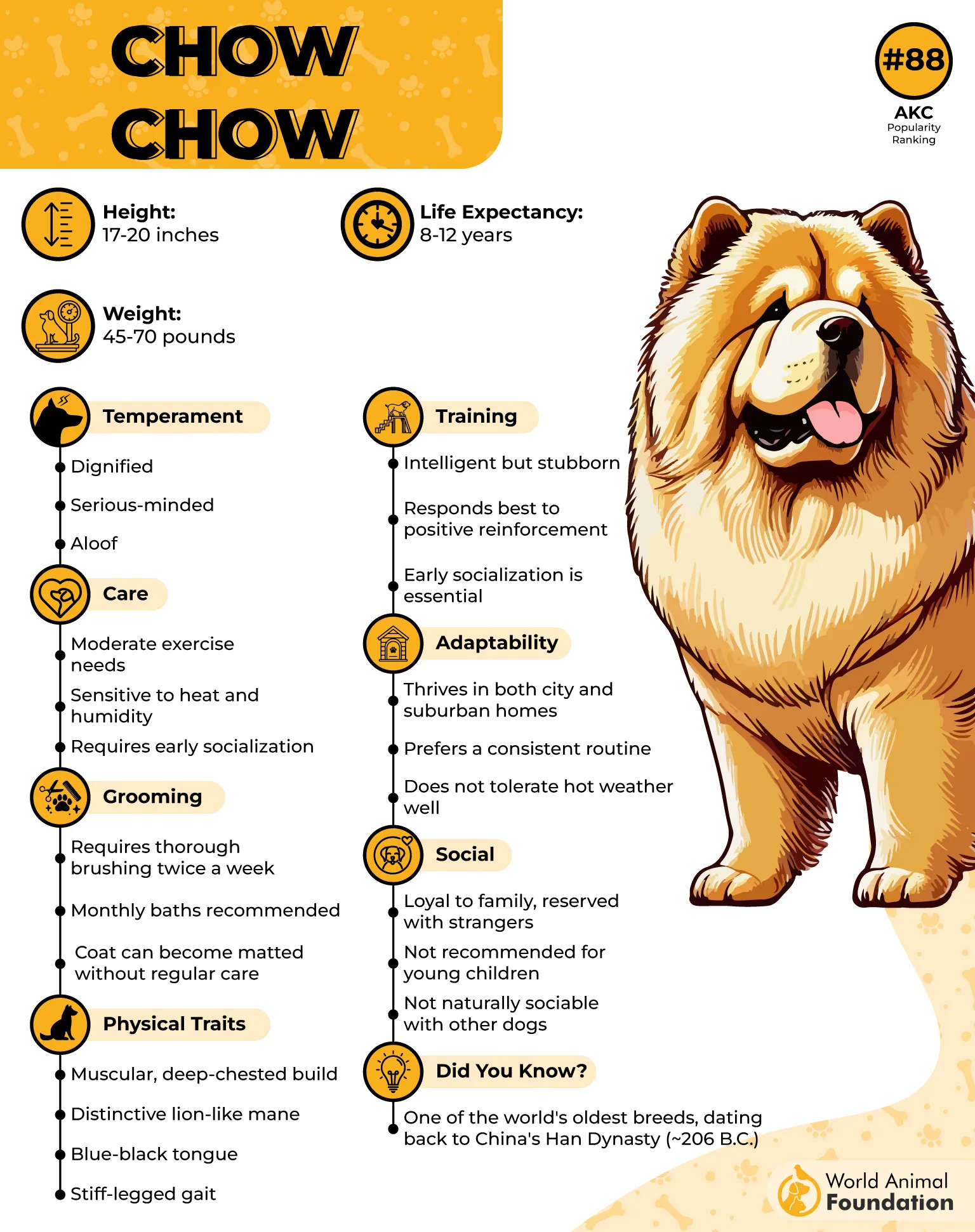
According to WebMD, exercise requirements are moderate, with short walks being sufficient for their daily needs. They are not overly energetic but enjoy structured activities that engage their intelligence. However, their stubborn nature means they may ignore commands if they don’t see the purpose behind them.
Chow Chows have a thick double coat that requires consistent grooming to prevent matting. Shedding is significant, especially during seasonal coat changes. Regular brushing and occasional baths are necessary to keep their fur clean and debris-free.
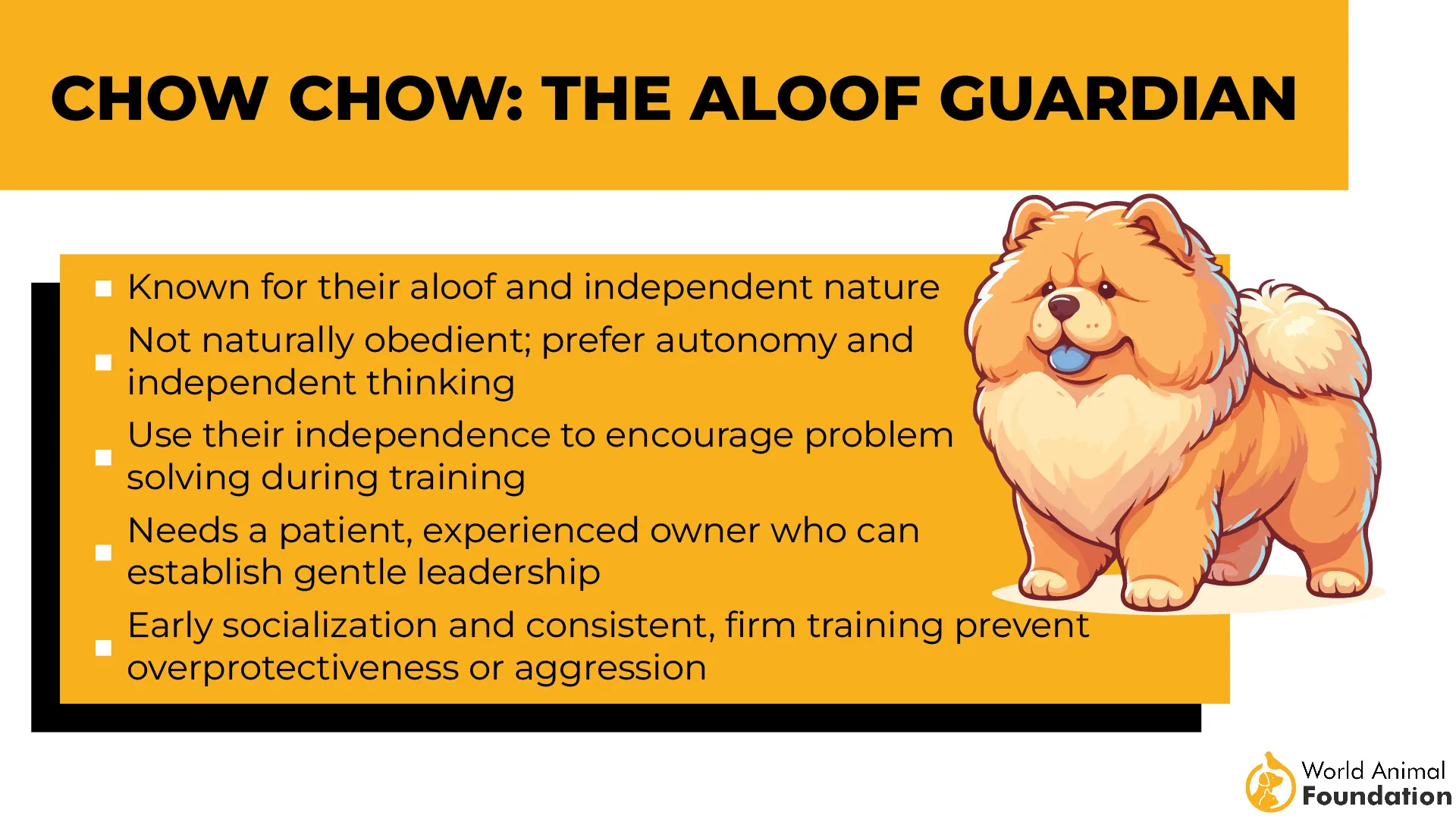
Health concerns for Chow Chows include hip dysplasia, entropion, and thyroid disorders. Due to their unique facial structure, they are sensitive to extreme heat. Providing cool resting areas and avoiding excessive physical exertion during warm weather helps prevent discomfort.
Fun Fact
Chow Chows have a unique blue-black tongue, a rare trait found in only a few breeds. This feature is present from birth and becomes more prominent as they age, adding to their distinct and striking appearance.
2. Afghan Hound
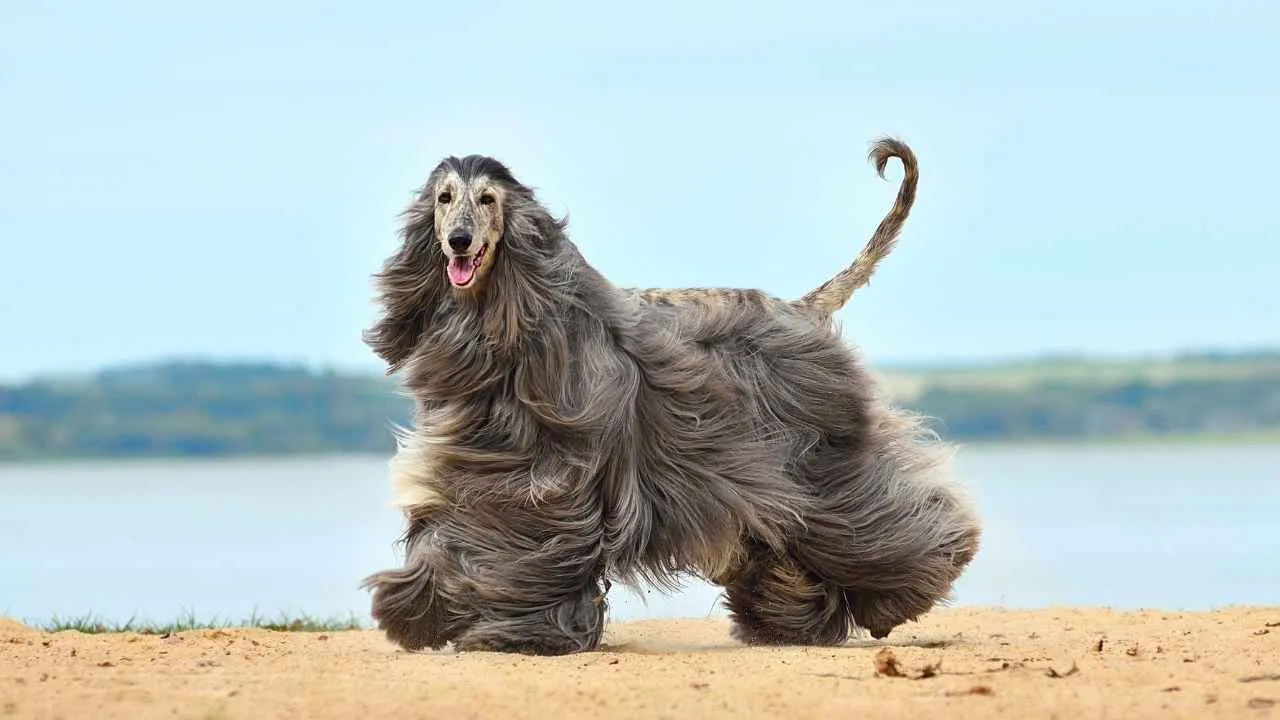
Afghan Hounds are renowned for their elegant coats and dignified expressions. While their tracking abilities are limited, their speed and agility make them exceptional sprinters. They are independent thinkers, often displaying a cat-like attitude toward training and commands.
This breed thrives in open spaces where they can stretch their long legs. Daily exercise is crucial, as they have bursts of high energy. They may appear reserved, but they develop strong attachments to their families and prefer familiar surroundings.
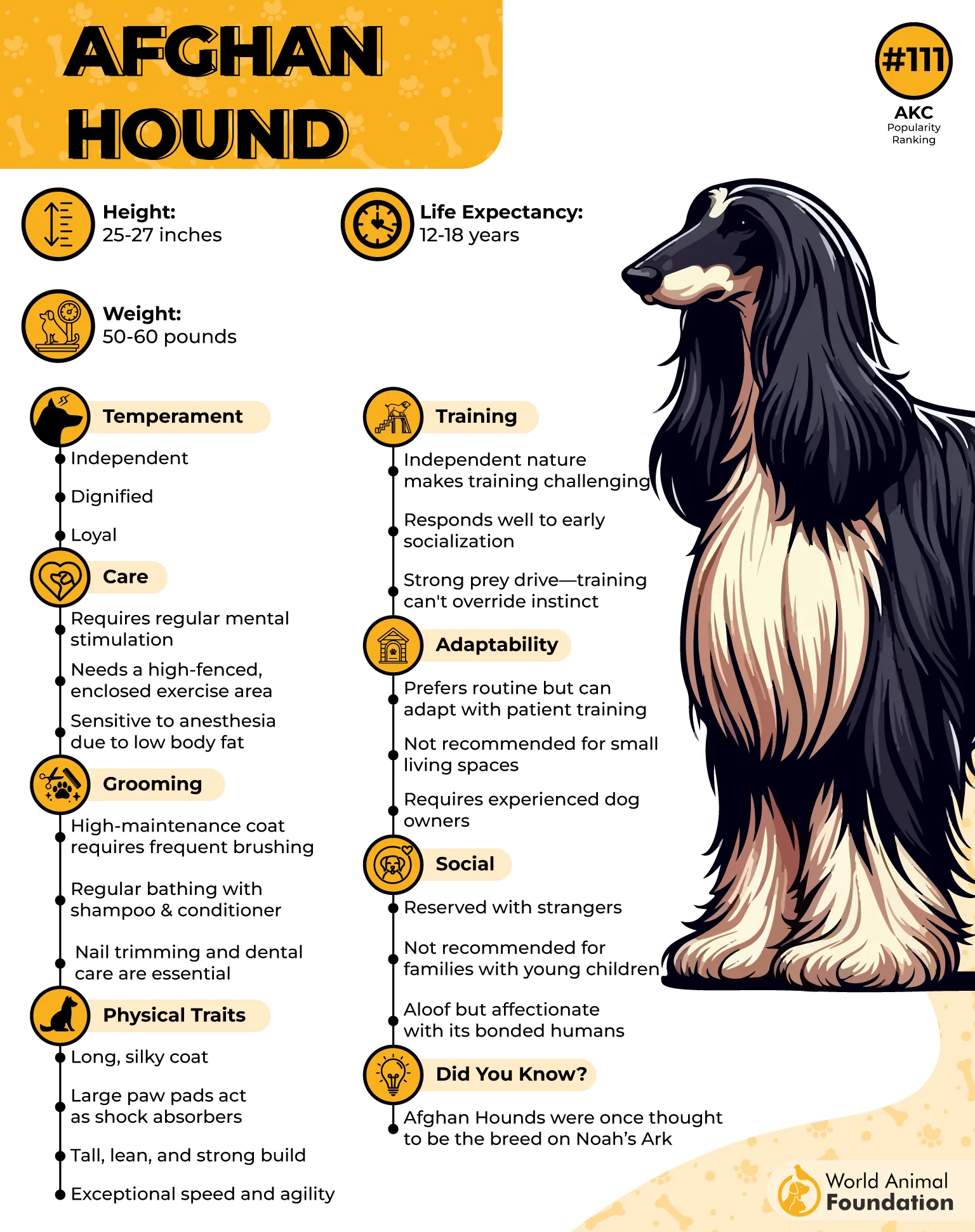
Grooming is a commitment due to their long, silky coat. Regular brushing is necessary to prevent tangles and maintain their luxurious fur. Bathing should be done with care, using gentle shampoos to preserve the natural oils in their hair.
Afghan Hounds have a strong prey drive, often chasing after small animals if not properly supervised. Secure fencing is essential to prevent them from wandering off. Their independent nature means they may not always respond immediately to recall commands.
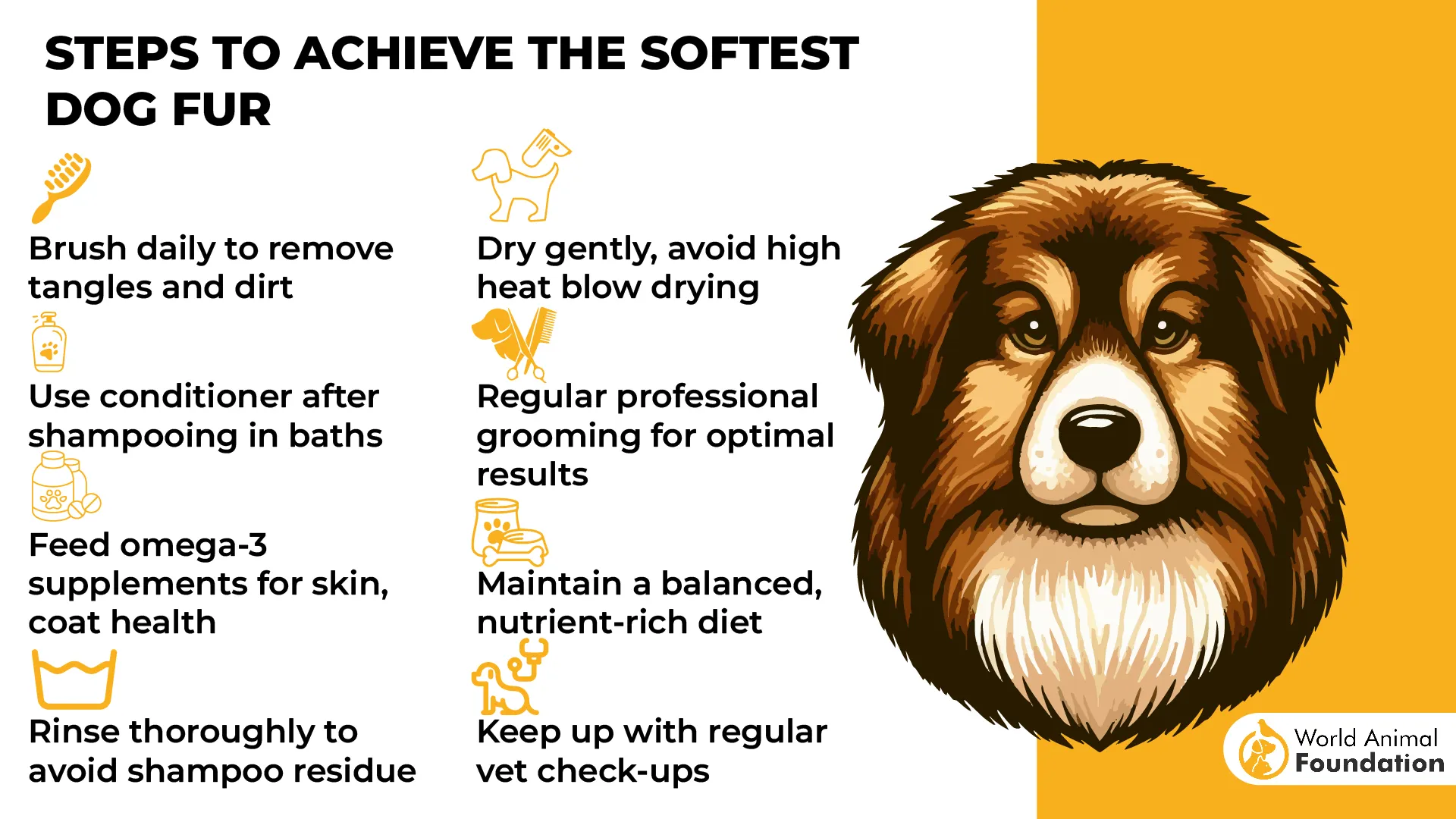
Health concerns include hip dysplasia, cataracts, and sensitivity to anesthesia. Their slim build makes them prone to injuries if they engage in rough play. A well-balanced diet supports their lean muscle mass and keeps them in top physical condition.
Fun Fact
Afghan Hounds were once considered royal hunting dogs in ancient Afghanistan. Their speed and endurance allowed them to track and chase prey over long distances, making them highly valued by nobility and skilled hunters.
3. Mastiff
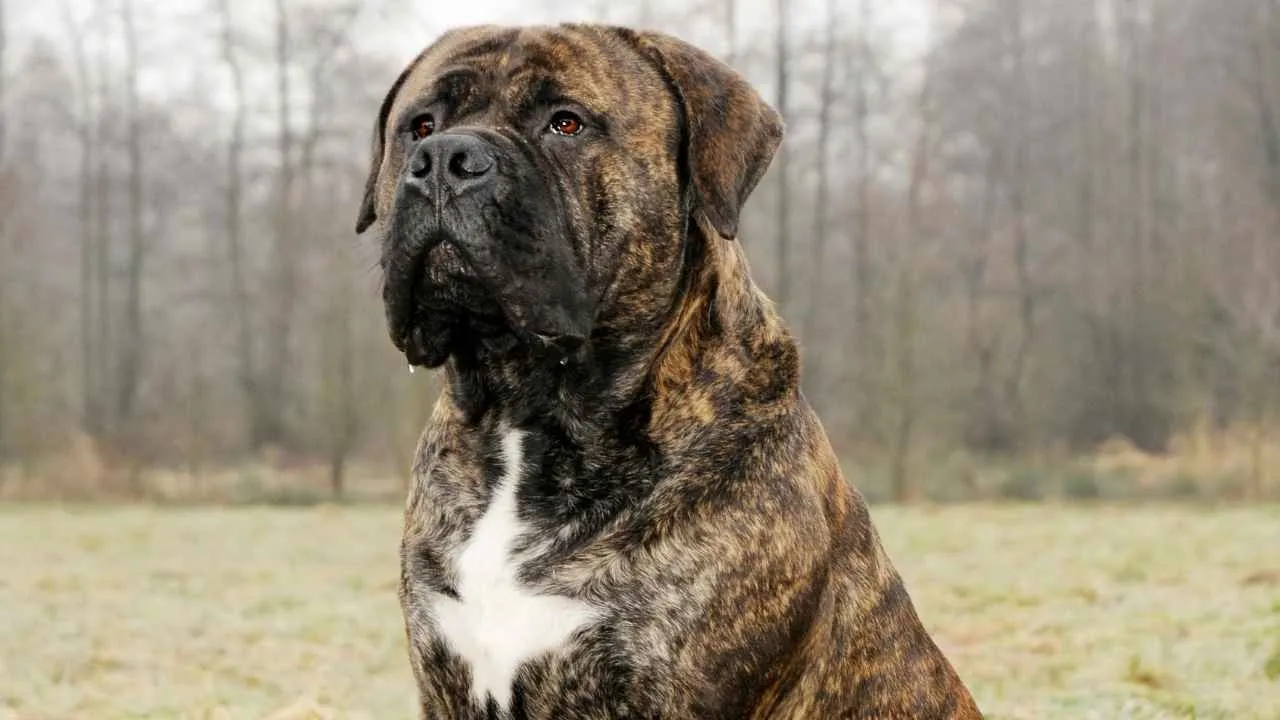
Mastiffs are massive dogs with an imposing presence, but their tracking skills are minimal. Instead, they excel in guarding duties, using their sheer size and deep bark to deter intruders. Their calm nature makes them reliable protectors without unnecessary aggression.
These dogs require consistent training from an early age to ensure proper behavior. They are intelligent but may exhibit stubborn tendencies, needing firm, patient guidance. Positive reinforcement methods work best to encourage obedience without overwhelming them.
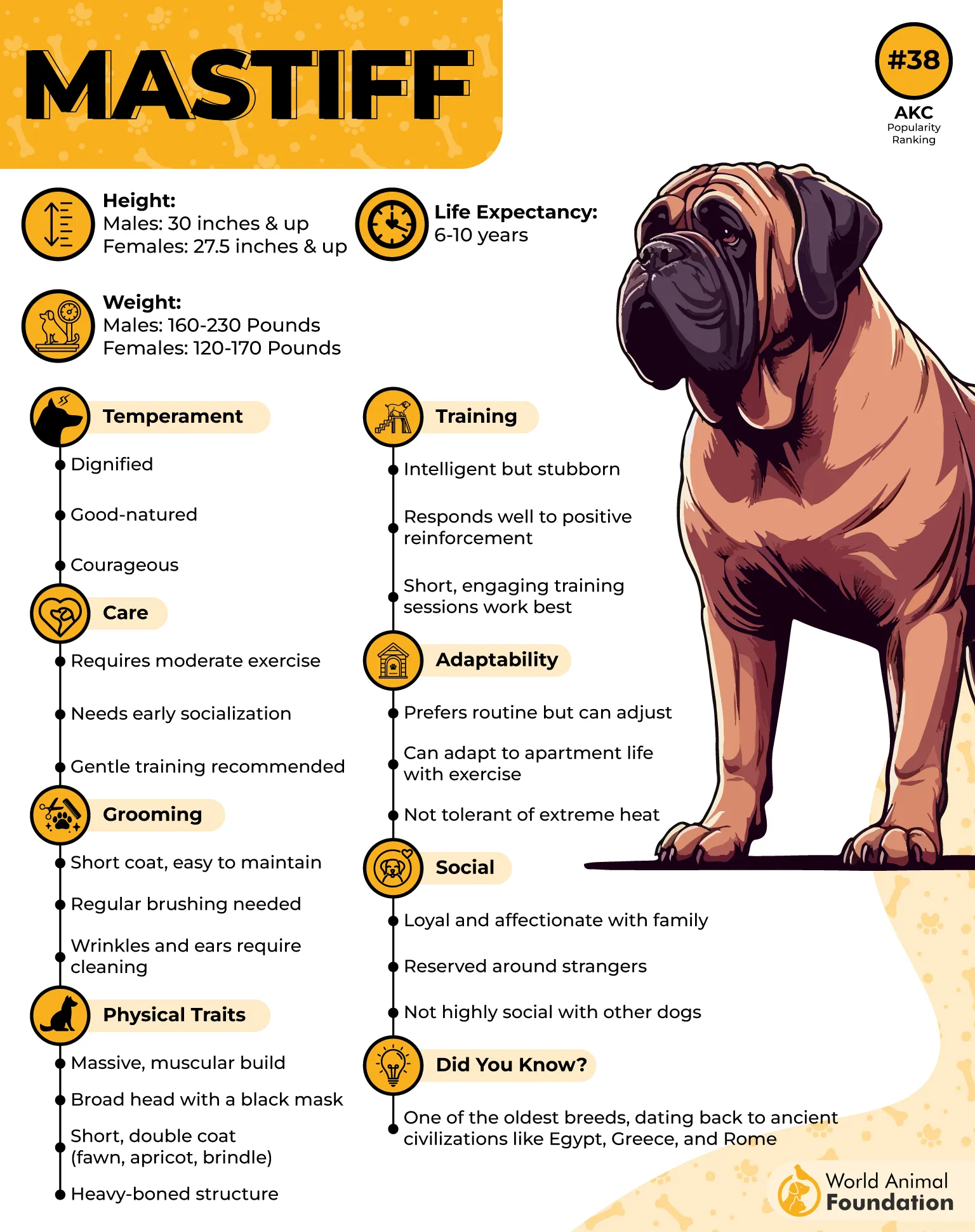
Exercise needs are moderate, as Mastiffs are not highly active dogs. Short walks and play sessions help maintain their health. Due to their large frame, prolonged strenuous activity can strain their joints, making controlled exercise essential.
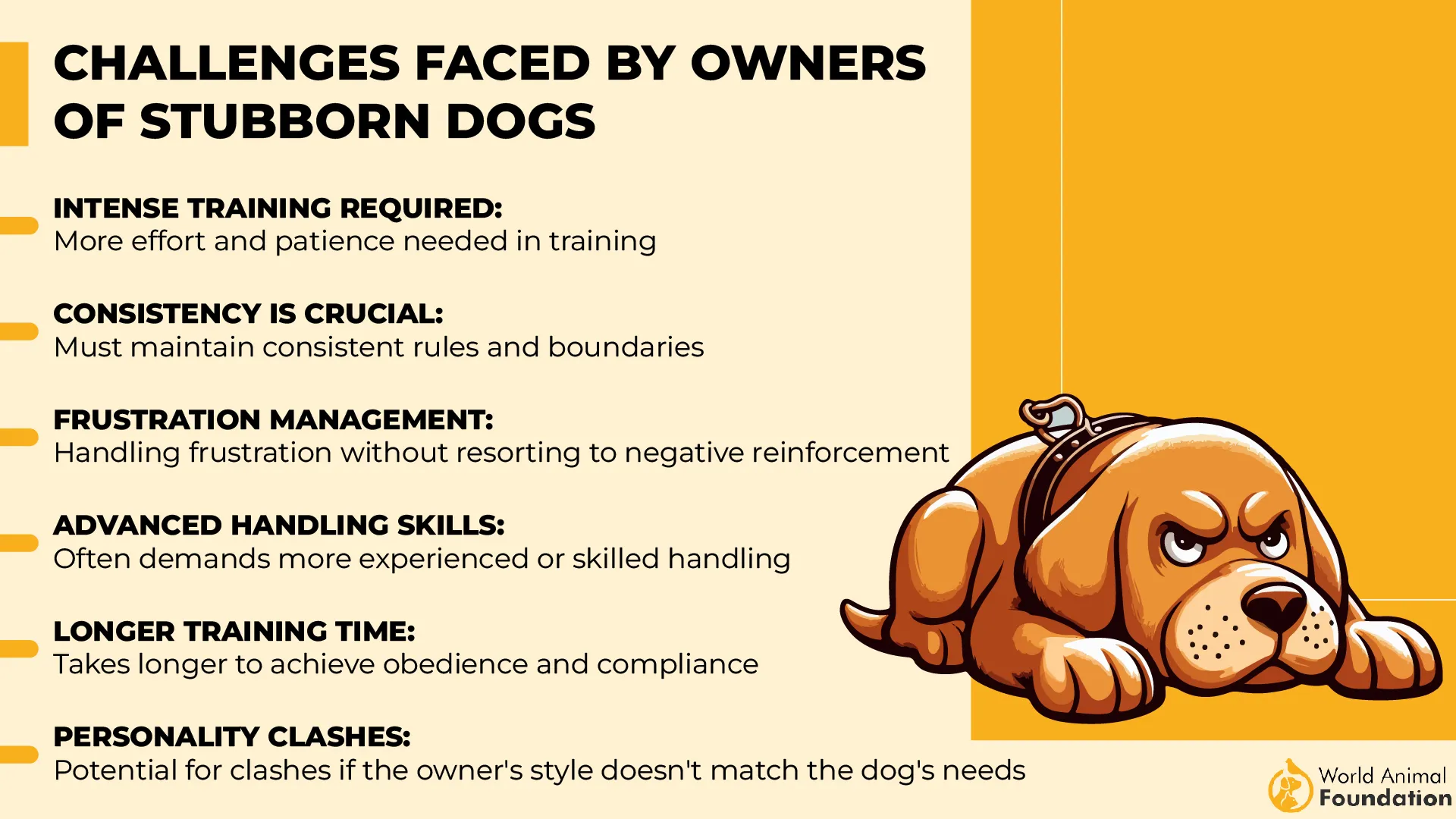
Grooming is relatively low-maintenance with their short coat, but regular brushing helps reduce shedding. Their facial wrinkles should be cleaned to prevent infections, and ear care is necessary to avoid moisture buildup, which can lead to irritation.
Common health concerns include joint issues, heart conditions, and obesity. Their large size makes them susceptible to bloat, a serious digestive disorder. Feeding them smaller, controlled meals and avoiding excessive exercise after eating reduces the risk.
Fun Fact
Mastiffs have a long history as war dogs, dating back to ancient civilizations like Rome and Egypt. Their impressive strength and loyalty made them valuable allies in battle, often guarding camps and defending soldiers.
4. Pekingese
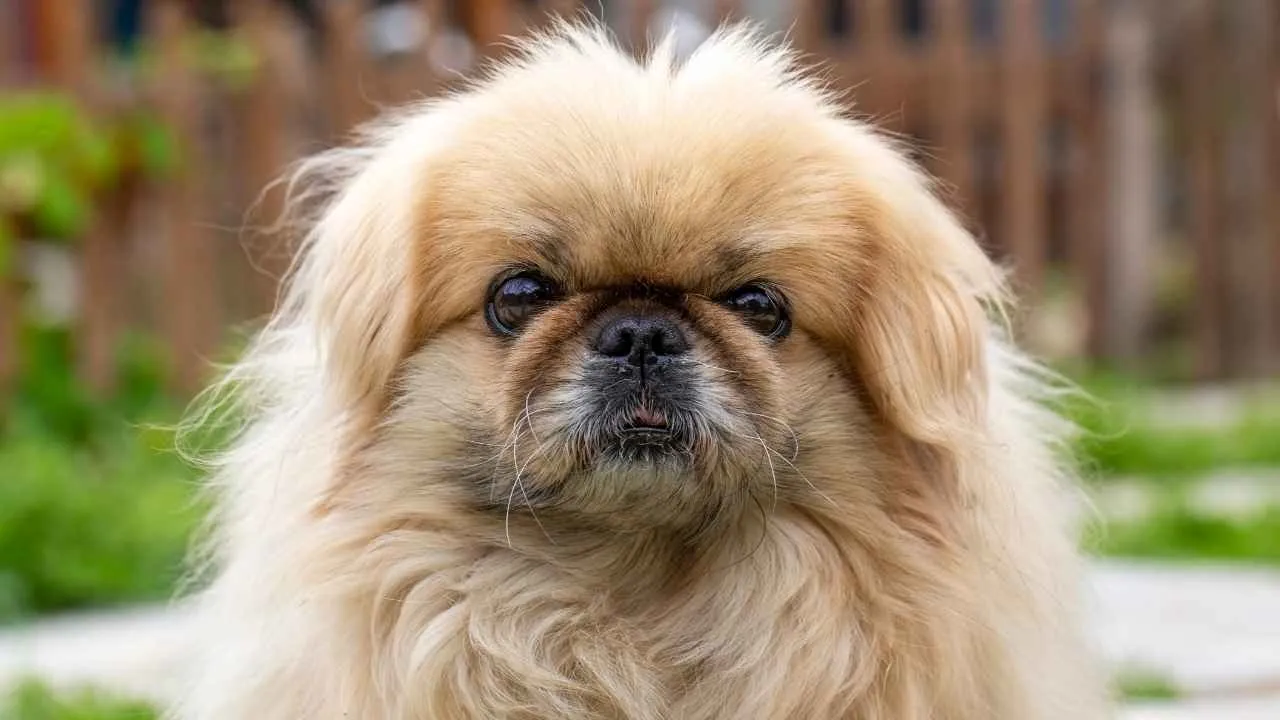
A Pekingese may not be the dog for tracking tasks, but it has a regal history dating back to ancient China. Bred for nobility, this small yet confident breed carries itself with an air of importance, showcasing its luxurious coat and distinctive rolling gait.
This breed is independent and has a stubborn streak, which means training requires patience. Pekingese respond best to positive reinforcement and short training sessions. While intelligent, they prefer making decisions rather than promptly following commands.
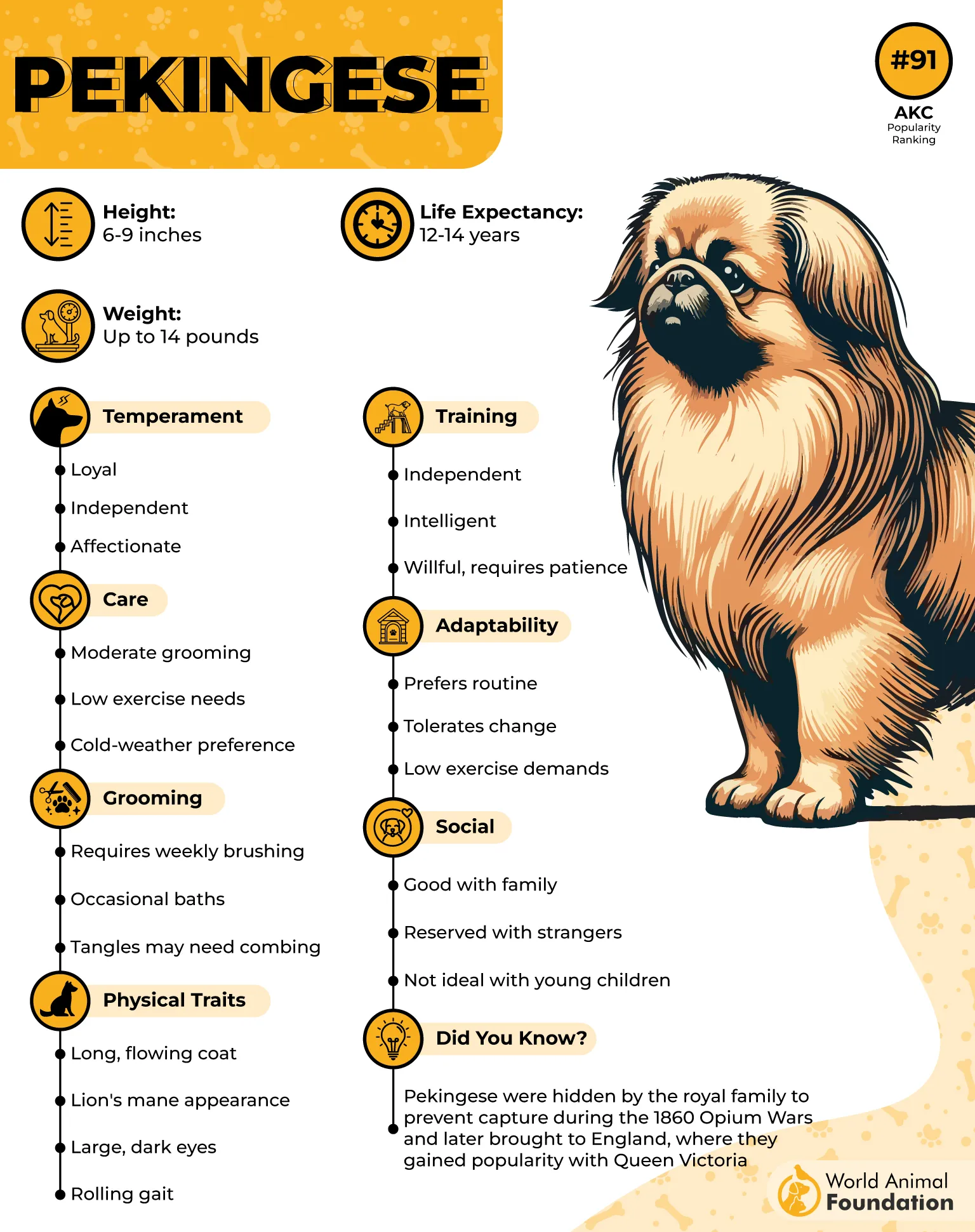
According to PetMD, with a thick double coat, grooming is essential. Regular brushing prevents matting, especially around the mane-like fur. Shedding is moderate, but seasonal changes can lead to heavier hair loss. Eye care is crucial due to their prominent eyes, which are prone to irritation.
Despite their small size, Pekingese are fearless and have strong protective instincts. They tend to be reserved around strangers but develop deep loyalty toward their owners. Their bold personality often leads them to act much larger than they are.
This breed has moderate exercise needs. Short daily walks and interactive play sessions keep them engaged. They are not highly energetic but appreciate mental stimulation through puzzle toys and occasional exploration of their surroundings.
Fun Fact
Pekingese were once considered sacred and were exclusively owned by Chinese emperors. If commoners were found with one, they risked severe punishment. Their history as palace dogs remains evident in their dignified attitude today.
5. Borzoi
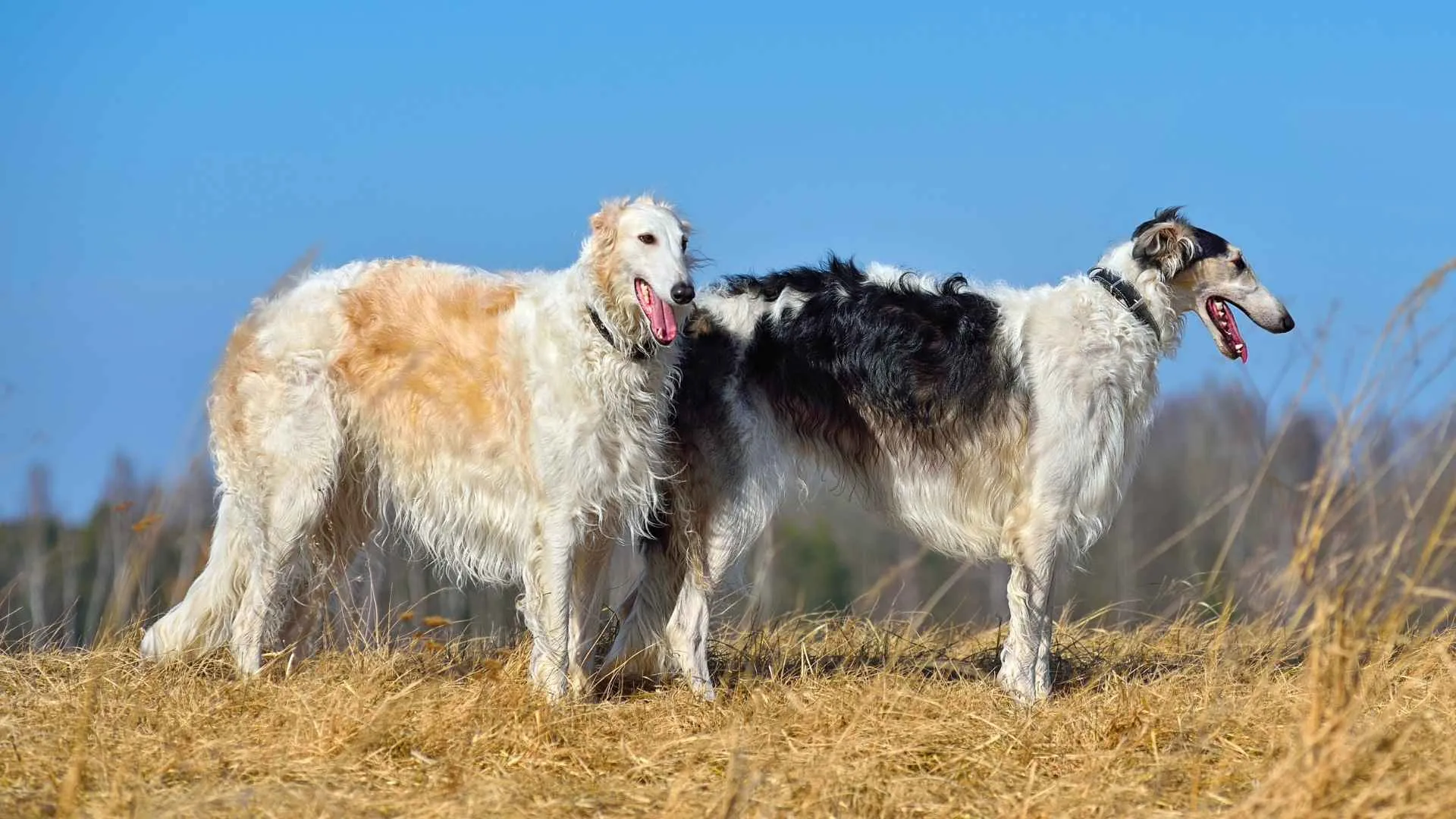
The Borzoi is not a breed you’d rely on for tracking. Originally bred for hunting wolves in Russia, they are built for speed rather than scent work. Their sleek, athletic build allows them to move with effortless grace and impressive agility.
Borzois are surprisingly quiet and reserved. They tend to be gentle and well-mannered, with a dignified personality. While affectionate with their families, they do not display excessive enthusiasm and prefer a calm, relaxed environment.
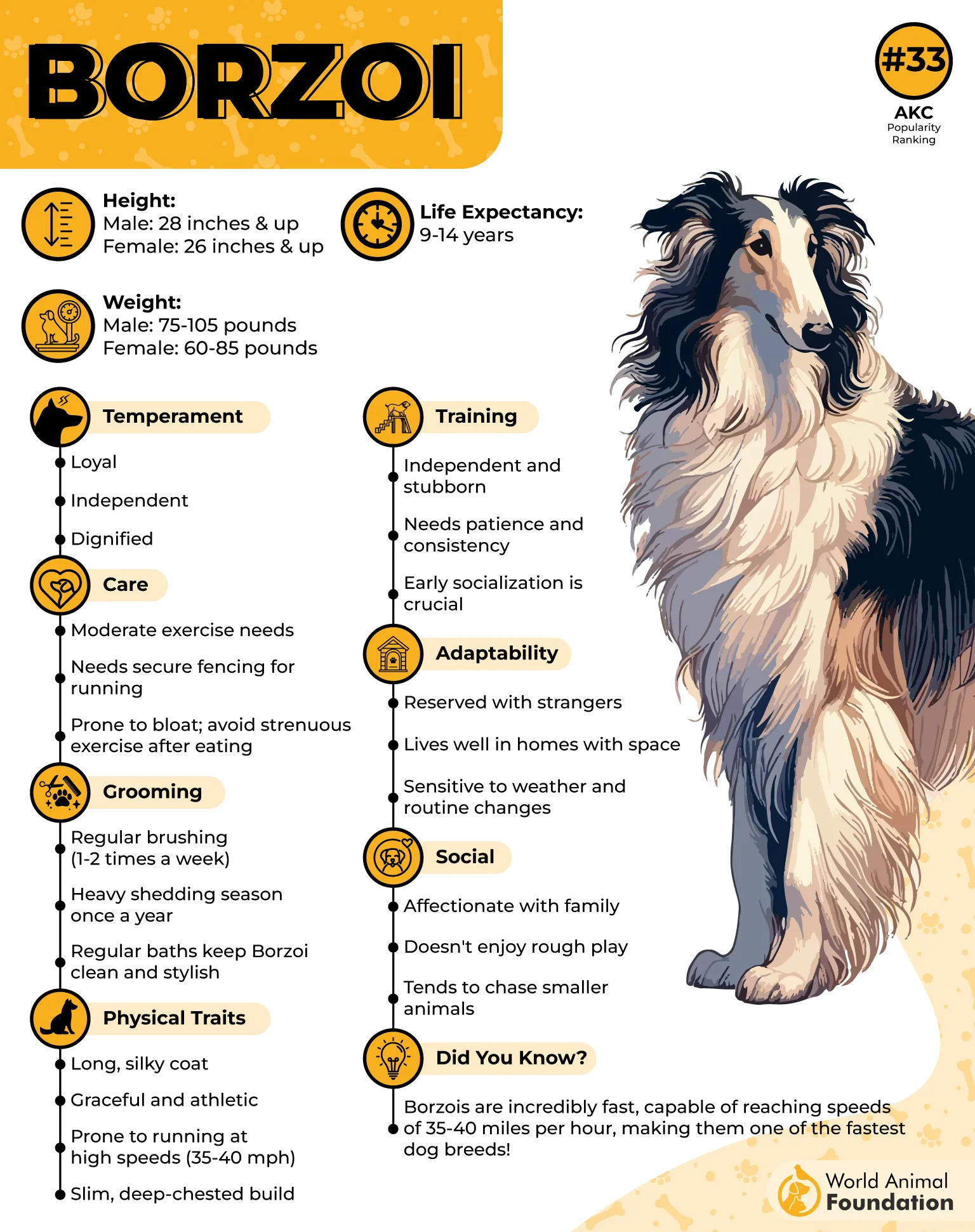
Their long, silky coat requires consistent care to prevent tangles. Brushing a few times a week keeps their fur smooth and reduces shedding. Seasonal coat changes can lead to more shedding, requiring additional grooming during these periods.
Borzois have a strong prey drive. They will likely give chase if something small and fast catches their attention. A secure, fenced yard is essential for their safety, as their instinct to run overrides obedience in many cases.
Despite their size, Borzois do not need excessive exercise. They enjoy short bursts of high-speed running, but they are surprisingly laid-back indoors. A combination of daily walks and occasional sprinting sessions keeps them happy and healthy.
Fun Fact
Russian nobility adored Borzois, often gifting them to foreign dignitaries. These elegant dogs were favored companions in grand palaces and were frequently portrayed in artwork as symbols of grace and sophistication.
6. Chihuahua

Chihuahuas are not known for their tracking skills, but their confidence and big personality make them stand out. Despite their tiny size, they carry themselves like royalty, often acting as if they are in charge of every situation they encounter.
This breed has a surprisingly sharp mind. They learn commands quickly but often choose to follow them only when it suits them. Consistent training and socialization from an early age help manage their naturally bold and sometimes stubborn attitude.
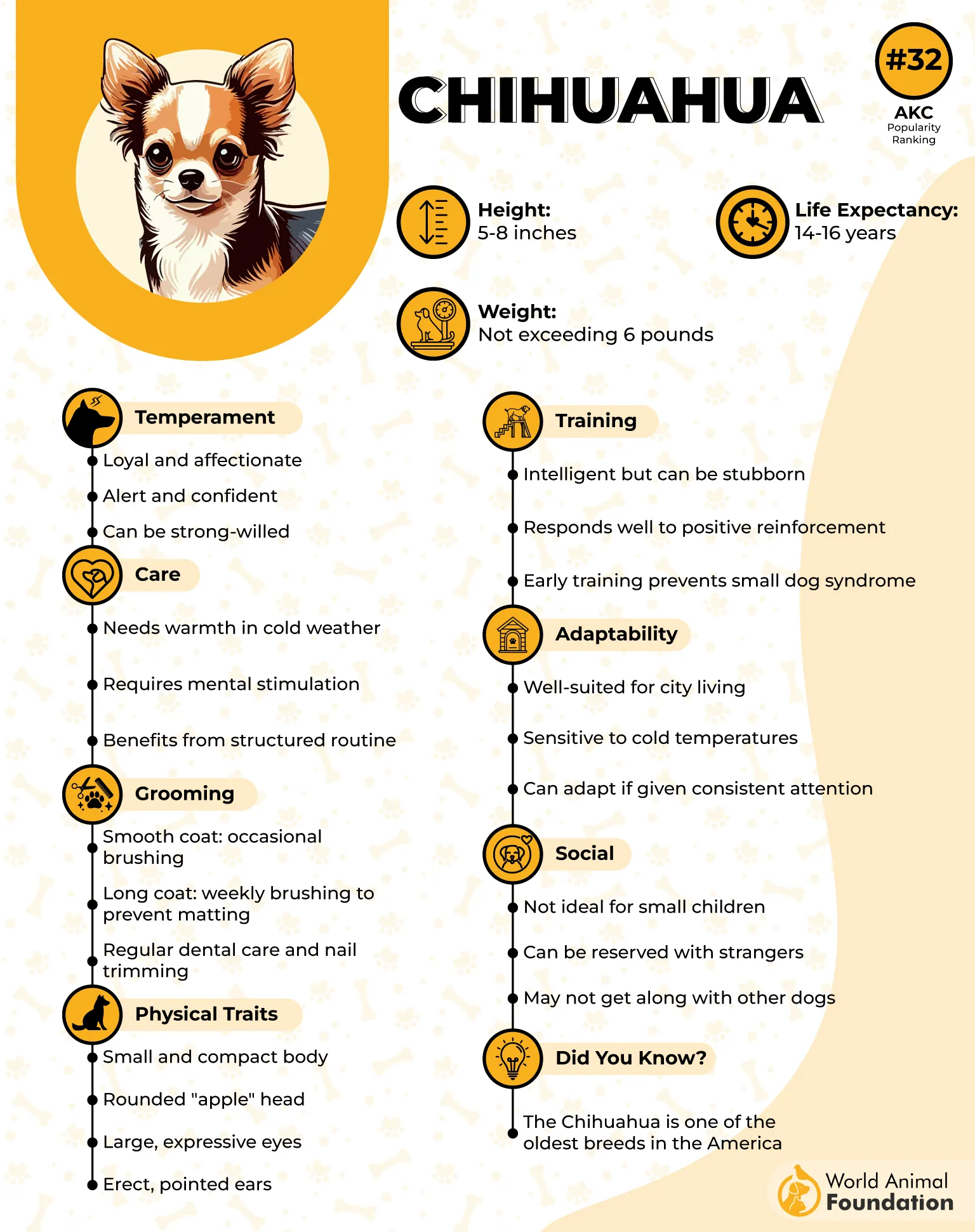
According to the AKC, Chihuahuas have minimal grooming needs. Their short or long coats require occasional brushing, and shedding is moderate. Regular dental care is essential as they are prone to dental issues due to their small mouths and crowded teeth.
Their alertness makes them excellent watchdogs. They react instantly to unfamiliar sounds and people, often barking to alert their owners. While their size prevents them from being true guard dogs, their protective nature is undeniable.
Exercise requirements are minimal. Short walks and play sessions indoors or in a secure yard keep them active. They prefer staying warm and cozy, often burrowing under blankets or seeking out sunny spots to lounge in.
Fun Fact
Chihuahuas have the largest brain-to-body ratio of any dog breed. Their intelligence and assertive nature make them quick learners, though they often use their smarts to get their way rather than follow rules.
7. Chinese Shar Pei
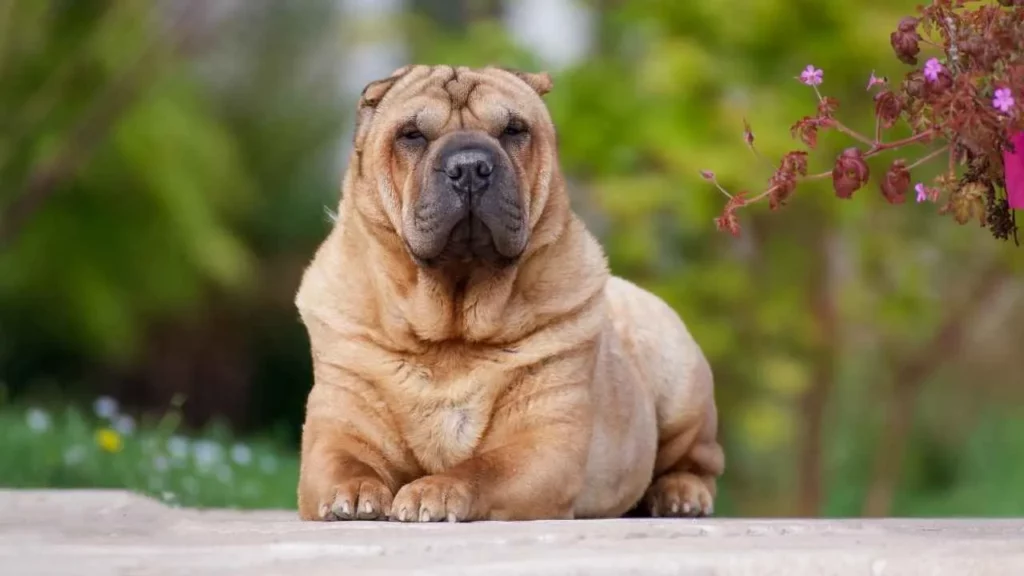
Tracking is not a Chinese Shar Pei’s strong suit, but they excel in loyalty and independence. Originally bred in China for guarding and herding, they are naturally protective and reserved, displaying a unique combination of calm confidence and quiet determination.
One of their most distinctive features is their deeply wrinkled skin. These wrinkles require special attention, as trapped moisture can lead to irritation. Regular cleaning and drying of the folds help prevent skin infections and maintain overall health.
Shar Peis are known for their strong-willed nature. While intelligent, they are not overly eager to please, making training challenging. Consistent, firm leadership and early socialization help shape a well-behaved and obedient dog.
This breed has a short, bristly coat that requires little grooming. Shedding is minimal, and a weekly brushing session is usually enough to keep their coat looking neat. Their skin can be sensitive, so gentle handling is recommended.
Exercise needs are moderate. Daily walks and occasional playtime keep them fit, but they do not demand excessive physical activity. They enjoy routine and prefer calm, predictable environments over chaotic or overly stimulating situations.
Fun Fact
Shar Peis have a unique blue-black tongue, much like the Chow Chow. This rare trait is believed to have developed to make them appear more intimidating to potential threats, adding to their historical role as guardians.
Conclusion
Not all dogs are natural trackers, and that’s perfectly fine. Some breeds excel in other areas, like protection, agility, or companionship. While scent hounds can follow trails for miles, others rely more on instincts, sight, or human guidance. Intelligent dogs often adapt well to training, even if tracking isn’t their strength.
Breeds with minimal tracking ability may struggle with scent detection, but they bring unique strengths. Some are excellent watchdogs, while others thrive in competitive sports or family environments. Recognizing their abilities ensures they are placed in roles that suit them best. Even small dog breeds, despite their size, can excel in dog training focused on obedience and problem-solving.
If you are looking for a scent-tracking dog, many well-known breeds, such as the German Shepherd, Labrador Retriever, and English Springer Spaniel, excel in scent work and tracking, making them reliable choices for search-and-rescue teams. Others, like the Basset Hound, are born with an exceptional sense of smell, while Jack Russell Terriers use their keen instincts for different types of work.
Choosing a dog should always align with its natural strengths. If scent tracking isn’t their strong suit, there are plenty of other ways to appreciate their skills. Every breed has something special to offer.

